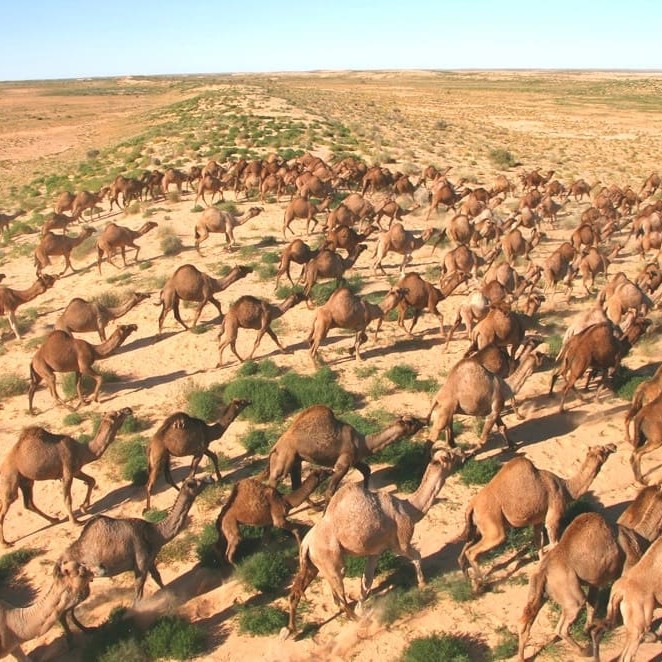A major project to reduce the environmental and economic impact of feral camels on remote central Australian landscapes is coming to a close.
The $19 million survey and management project has reduced camel numbers by about 160,000 over the past four years, surveys suggest.
 When roaming in unmanaged numbers, feral camels threaten vegetation, wildlife and cultural assets, and damage community and pastoral industry infrastructure.
When roaming in unmanaged numbers, feral camels threaten vegetation, wildlife and cultural assets, and damage community and pastoral industry infrastructure.
The achievements and outcomes of the Australian Feral Camel Management Project will be outlined in Canberra this week.
Jan Ferguson, the managing director of Ninti One, which coordinated the project, said a significant reduction in feral camel densities had been achieved around the 18 environmental sites targeted – especially in the Simpson Desert and Pilbara regions.
“As a result of feral camel management, native vegetation, wildlife and waterholes are in better condition over large tracts of landscape, and the cattle industry has experienced reduced camel pressure on grazing lands,” she said.
The program was designed to:
- Reduce camel impacts at 18 known biodiversity sites
- Reduce the impacts of camels in pastoral areas, and
- Improve the information on feral camel population.
Before the program began, native wildlife, pasture, water resources and cultural heritage were all at considerable risk from a growing herd of feral camels, numbering in the hundreds of thousands, a Ninti One press statement said.
Camels were introduced as transport animals more than 100 years ago and turned loose when other forms of transport replaced them. Until recently, they were causing havoc across large swathes of the inland as numbers increased.
Among its outcomes, the AFCMP project claims to have:
- removed more than 160,000 feral camels, achieving low density targets at key environmental sites
- reduced the impact on pastoral leases
- established landholder consent across 1.3 million sq km of priority management areas for commercial and/or non?commercial feral camel removal
- built strong collaborations across federal, state and local government agencies, natural resource management bodies, pastoralist and Aboriginal stakeholder groups
- strengthened relationships between the commercial camel industry and landholders
- built the skills and infrastructure for ongoing commercial and non?commercial forms of removal
- improved scientific knowledge about feral camels, their impacts and their management
- delivered the project $4 million dollars under budget.
The AFCMP contracted extensive aerial surveys in 2013, delivering an estimate that the feral camel population has now been reduced to about 300,000 head.
The reduction from previous estimates is attributed to increased survey information and improved knowledge about feral camel population dynamics, culling under the AFCMP project and by individual landholders, and natural mortality due to drought and fire.
“The project was a huge effort in many ways,” Ms Ferguson said. “It involved building relationships and collaborations across several state borders, government agencies, the private sector and hundreds of different landholders and Aboriginal communities.
“But it has paid off, and shows what can be achieved when the will, the evidence and the resources are there.”
- Details on the findings and outcomes of the project, as well as on the prospects and necessity for continued control measures to keep camels in check across inland landscapes will be presented in Canberra on November 21.
